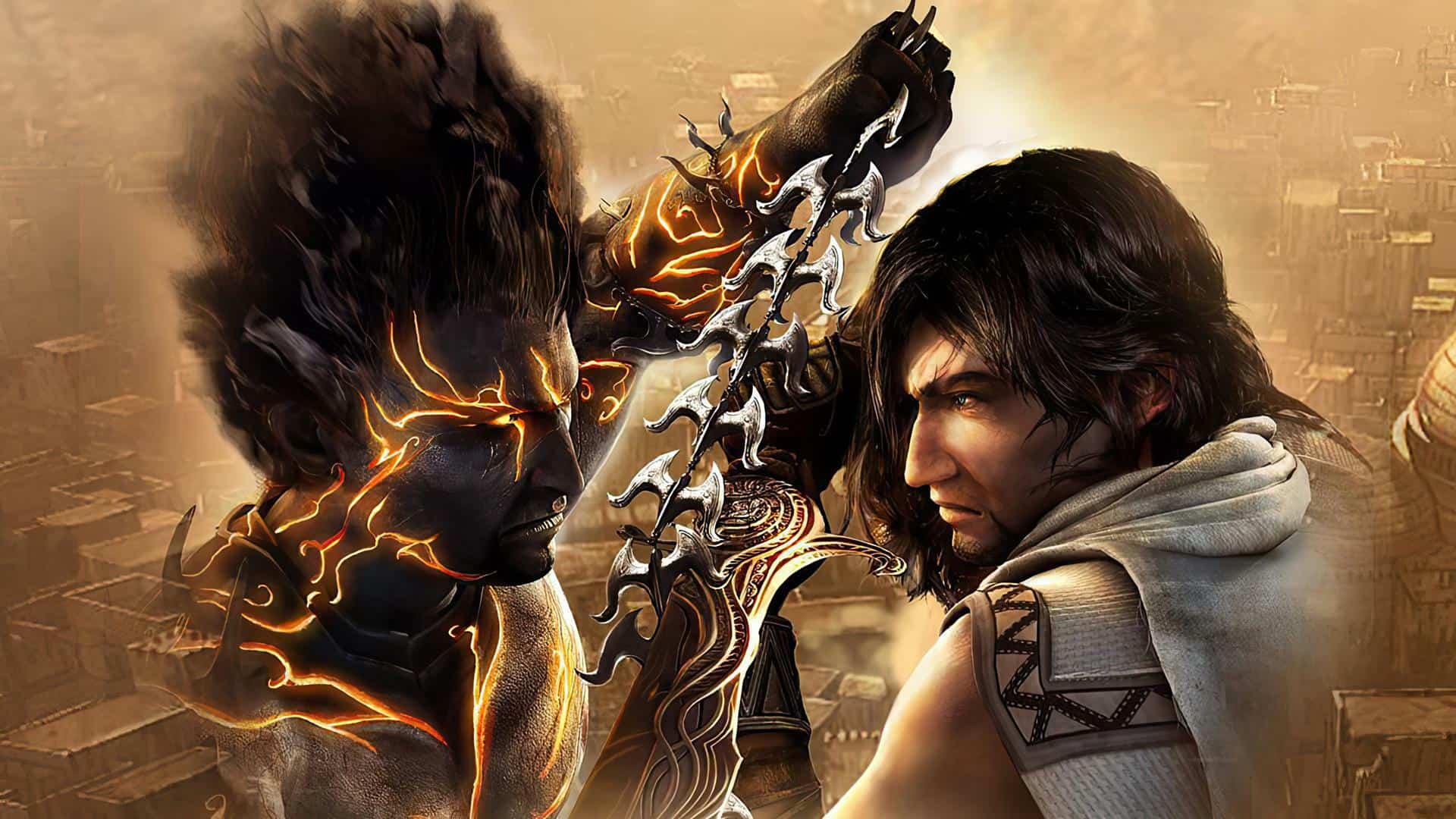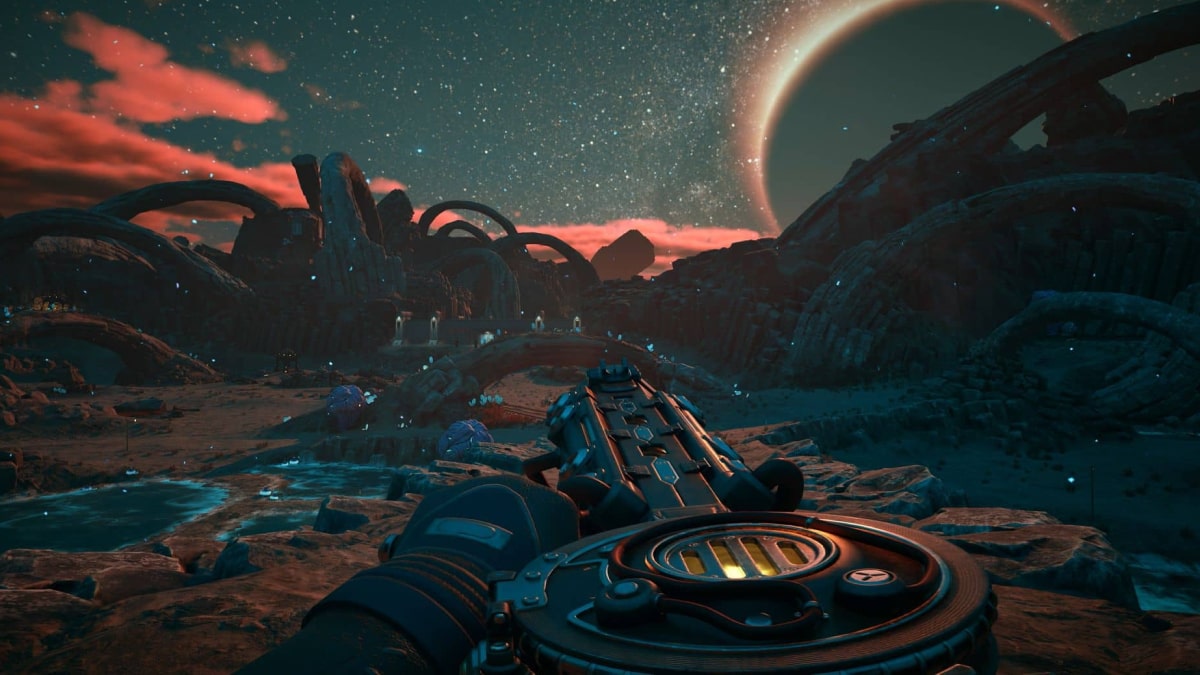You can trust VideoGamer. Our team of gaming experts spend hours testing and reviewing the latest games, to ensure you're reading the most comprehensive guide possible. Rest assured, all imagery and advice is unique and original. Check out how we test and review games here
Ubisoft’s Prince of Persia Sands of Time is, for many, one of the greatest games of the last generation, and that proved to be a hard act to follow. Warrior Within performed better in the charts, but its focus on combat and a hard rock soundtrack didn’t sit well with fans of the first game. Taking these criticisms on board, Ubisoft created The Two Thrones, which brought back much of the acrobatic goodness that made the original such a cult hit. Now on the Wii, a few years late and under the name Rival Swords, does a dose of motion control make it a better game?
If you haven’t played the two previous games you’ll be a little confused by what’s going on as Rival Swords does little to bring new players up to date with earlier goings on. In Rival Swords, the Sands of Time have been unleashed on Babylon and the prince must save his kingdom and its people. Things obviously aren’t going to be easy, and he’ll also have to contend with a dark version of himself. The Sands of Time have infected him, and throughout the adventure you’ll involuntarily transform into a more dangerous, more arrogant prince. This split personality is made apparent during the fairly lengthy fifteen-hour campaign, with the dark prince often trying to influence the ‘light’ prince as a voice in his head.
First things first. This is a pretty straightforward port of the old PS2 and Xbox game, and it even lacks the extra content that the PSP version of Rival Swords includes. The big difference comes from the controls, which are now all motion sensitive. Swing the Wii-mote and Nunchuck to attack, tilt the Wii-mote to move the camera (also mapped to the d-pad), and use the Nunchuck to unleash the Dark Prince’s whip moves. As great as it sounds on paper, the new controls don’t really add much to the experience and in many ways are more awkward than the standard controls found in the PS2 version of Two Thrones.
Prince of Persia games are at their best when you’re presented with a series of ledges, beams, walls, jump pads, poles, chains, spikes, bottomless pits, blades and more, and you must get yourself out of the area. When you’re in the groove you’ll effortlessly swing from pole to pole, leap from beam to beam, glide down curtains, and traverse perilous sections with ease and elegance. You need to be on your game though, with one false move sending you to your death. The last third of the game in particular is near leaping perfection, with some of the most entertaining sections of any platform adventure released in years.
If there’s a problem with this aspect of the game, it’s the jumping. At times Rival Swords will throw up seemingly impossible jumps that leave you totally clueless. You know the prince can jump a long way, but occasionally you’re forced into taking a leap of faith, and a lack of consistency makes this rather annoying. Some sections will allow you to make these Olympian leaps, while others laugh in your face as you throw away your life and are forced to trek through the last ten-minutes of the game. The dark prince is equally as agile, but can also use his chain to latch onto distant poles to traverse sections that would otherwise be impossible.
Combat seems largely similar to that found in Warrior Within, but the introduction of the dark prince shakes things up a little. While the ‘light’ prince is exceedingly controllable and has a move set largely based around throws and grabs, the dark prince seems rather brutish in comparison. His chain is the most lethal, with a spinning attack dispatching enemies with relative ease. This power is countered by a sluggishness not found when controlling the ‘light’ prince and an ever depleting health meter. This can be topped up by collecting sand power, but the mechanism causes more than a few problems.
Playing as the ‘light’ prince lets you take your time to scope out areas for the often unobvious way out of the section, but the dark prince’s depleting health gives the game a sense of urgency, which while heightens excitement and gives a sense of accomplishment, causes extreme aggravation at times. If you happen to get stuck in an area, with no clue as to what to do next (which happens a fair bit), you’ll be forced to start from the last checkpoint each time you die, forcing you to replay through a five-minute section (or longer) before you get the chance to wander around and attempt to pick a way out of the seemingly inescapable room, courtyard or similar.
The inability to top up the ‘light’ prince’s health causes almost equal frustration at points, and the general scarcity of save points (which also act as the only place you can top up health) mean that you’ll either have to play for longer than you wanted or sacrifice a substantial amount of progress and turn the console off. It’s as if the developers deliberately wanted you to dislike the game, despite everything that it does well. The whole trial and error gameplay style would have been fine had you been able to try things without the fear of being forced to play through lengthy sections over and over again.
There is of course the rewinding time feature that the Dagger of Time gives you, and this means you can get yourself out of bother while you have enough full chambers of sand. Rewinding a mistimed wall jump to your death helps alleviate some of the pain caused from the checkpoint system, but it comes in most handy when combined with the new stealth kills. When approaching enemies from behind or above, the screen will indicate that a stealth kill can be performed. In the Wii game you must activate a stealth kill by swinging the Nunchuck down, before swinging the Wii-mote when the prince’s dagger glows. The time you have shortens on the tougher enemies, but getting it right will make the difference between a five-minute battle and a twenty-second slaughtering. Using the rewind ability here can save you a lot of hassle. Aside from the rewind power, you’ll also gain a few other sand abilities, but it’s often best to save your sand chambers for rewinding out of mistakes.
Visually Rival Swords hasn’t moved the series on too much (if at all – it’s a fairly simple port in this respect), but it’s still a decent looking game. Polygon counts aren’t that high, but animations are wonderful and the bloom lighting is used to brilliant effect. Warrior Within haters will be glad to hear that the awful hard rock soundtrack has been discarded in favour of a much more bearable Middle Eastern sound. Voice work is generally solid, bar a few rather cheesy deliveries, but on the whole presentation is top notch.
Had Ubisoft fine-tuned the checkpoint placement, added a few more save points, tweaked the punishing dark prince sections and made combat a little less reliant on stealth kills, Rival Swords could have matched Sands of Time and been an improvement over the original Two Thrones. As it stands, even with annoying problems in larger supply than the sand itself, the game is often thrilling. This Wii port only really differentiates itself by its controls, so if you like the idea of slashing the Wii-mote and Nunchuck, Rival Swords is well worth a look.

/https://oimg.videogamer.com/images/79f6/prince_of_persia_rival_swords_1-33044.jpg)






